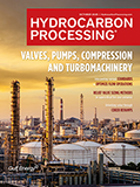Refining
Magnon project in Huelva to capture biogenic CO2 to produce renewable fuels
Magnon Green Energy, the Ence Group’s energy subsidiary, is promoting a pioneering project for the capture and recovery of biogenic carbon dioxide (CO2) at its biomass-based renewable electricity generation plant in Huelva, Spain.
PBF refineries to operate up to 76% of capacity in Q1
Independent U.S. refiner PBF Energy plans to operate its seven refineries up to 76% of their combined production capacity of 1 MMbpd in the first quarter of 2025.
Honeywell, AM Green collaborate to advance carbon capture and sustainable aviation fuel In India
Honeywell and AM Green signed a memorandum of understanding during India Energy Week 2025 to assess the techno-economic feasibility of producing sustainable aviation fuel from ethanol, green methanol from various carbon dioxide emission sources, and green hydrogen.
Yokogawa enhances IT/OT integration with new release of OpreX Collaborative Information Server
Yokogawa Electric Corporation announced the release of the latest version of OpreX™ Collaborative Information Server (CI Server), with enhancements that streamline application assembly and improve external connectivity.
U.S. crude stockpiles build on ongoing refinery maintenance
U.S. crude oil inventories rose last week as refinery maintenance continued, while gasoline stockpiles posted a surprise draw.
Russia's Volgograd oil refinery partially recovers after drone attack
Russia's Volgograd oil refinery, which had halted operations following a Ukrainian drone attack on February 3, has partially resumed processing.
Some U.S. Gulf refiners paying premium prices for Trinidad's Molo crude
Some U.S. Gulf Coast refiners have recently paid prices over the Brent LCOc1 crude benchmark for Trinidad and Tobago's Molo heavy sour crude.
Trump administration approves SAF refinery loan
President Donald Trump’s energy department said on Tuesday it approved the disbursement of a loan guarantee that had been finalized days before he took office to Calumet for the expansion of a sustainable aviation fuel (SAF) refinery in Montana.
Wood confirms ADNOC Refining’s capability to produce lower carbon aviation fuel
Wood has confirmed ADNOC Refining’s capability to produce lower carbon aviation fuel, paving the way for its future alignment with International Civil Aviation Organization’s Carbon Offsetting and Reduction Scheme for International Aviation
China’s crude oil imports decreased from a record as refinery activity slowed
Slower oil demand growth in 2024 led to less crude oil processed by China’s refineries and fewer crude oil imports compared with the record high set in 2023. China, the world’s largest importer of crude oil, received 11.1 MMbpd in 2024, down from 11.3 MMbpd in 2023.

- Ducor Petrochemicals, Blue Circle Olefins partner to create a fully circular supply chain for polypropylene 11/18
- World's first: Air Liquide’s innovative technology converts ammonia into hydrogen at industrial scale 11/18
- Borouge to supply advanced polyolefin solutions for next-generation vehicles 11/18
- ASTM International signs MoU with Gulf Cooperation Council Laboratory Company for Technical Services (GCC Lab TSCo.) 11/18
- KBC launches Visual MESA Energy Management System 7.3 11/18
- MHI Compressor secures steam turbine contract at Baton Rouge (U.S.) olefins plant 11/18




